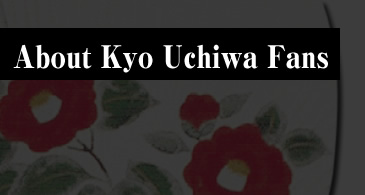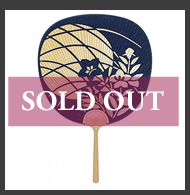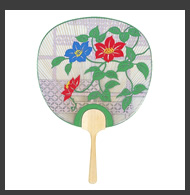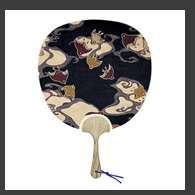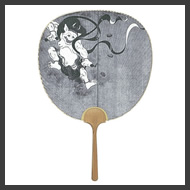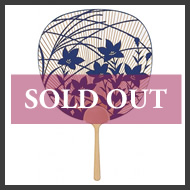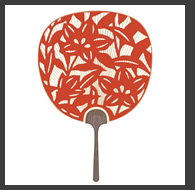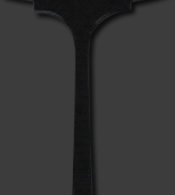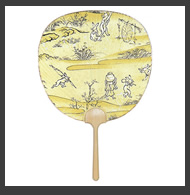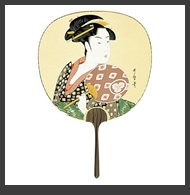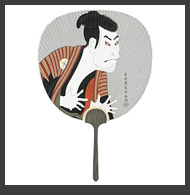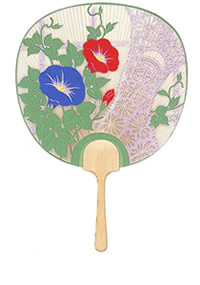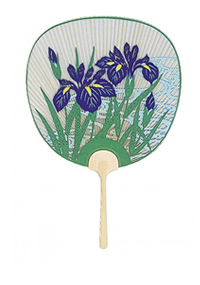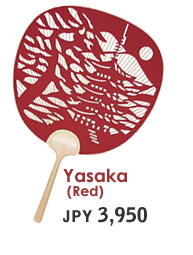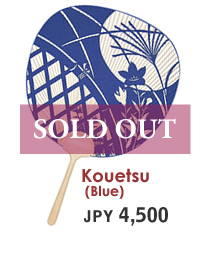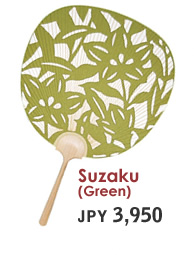 |
 |
|
Kyo uchiwa fans are believed to have developed after Korean fans brought to Japan by pirates between 1336 and 1392 influenced the designs of the fans used by the Japanese imperial household. These were then brought from Kishuu to Yamato Province, and from there to the Fukakusa area of Kyoto. It is here that Kyo uchiwa fans became established.
As the generations passed, these fans became more and more a ubiquitous element of Kyoto life. Today, new ideas and creative variations continue to be incorporated, producing new items of elegance and beauty that cannot be seen elsewhere in Japan.
The primary point that sets Kyo uchiwa fans apart from others are their embellishments and rich, beautiful designs. However, a more concrete difference is that Kyo fans feature a body inserted into an independently made handle.
The number of spokes varies from 50 to 100, with more spokes indicating a higher class of fan. Those with 100 spokes are considered decorative fans. Bamboo handles are common, but cedar is also employed. The handles of some fans are given a lacquer finish.
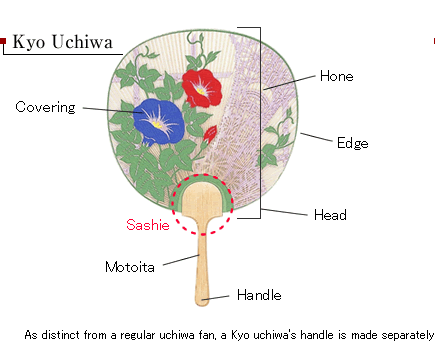 |
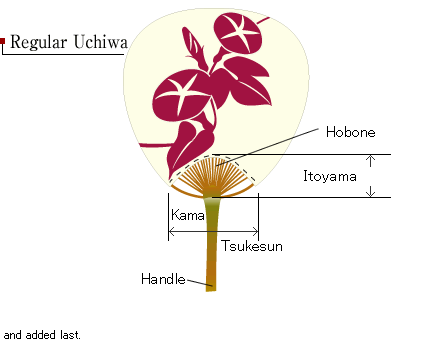 |
|
|
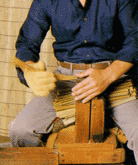 |
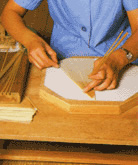 |
 |
| 6. A piece of bamboo with cuts in the top is worked from side to side to split it along the lines of the fibers. |
9. The spokes are attached to thin paper with glue. The spokes have a rectangular cross-section, and glue is applied to the narrower edge. |
13. After paper has been attached to both sides of the frame, a thin spatula is used to mark lines in the paper along the spokes.。 |
|
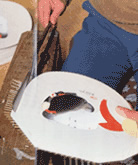 |
 |
||
| 15. The fan is cut to the correct size and shape. |
16. After the spokes have been defined and the correct shape produced, thin paper is stuck along the edge. Once the handle is added, the fan is complete. |
||
| Source: Kyoto Uchiwa Dansen Commercial and Industrial Cooperative | |||
This company creates a variety of uchiwa fans that appeal to the aesthetic sense of Japanese people. Even within Kyoto they are a famous as a manufacturer of Kyo uchiwa.
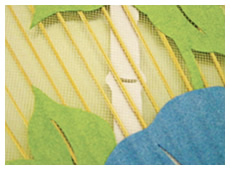 |
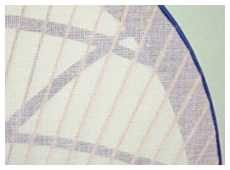 |
||
"Sha" is a thin gauze. Those designs that feature particularly intricate cut-out patterns are first covered with sha, and then the cut Japanese paper is attached to that. (If the sha were not used, the paper would not hold its shape.) This method of fan-making is called "shabari." |
"Ura-shabari" is a style whereby the back of the fan is covered in gauze (as opposed to paper). This creates an effect in between those of fans with one open side and fans with both sides open. | ||
The long handles mean these fans produce a cool, gentle breeze, and their colors have an unmistakable air of Japan to them. Choose your favorite from the variety of designs. |
||||
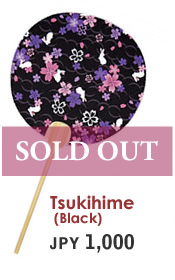 |
 |
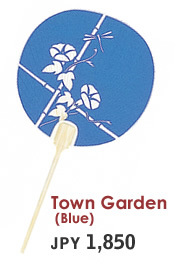 |
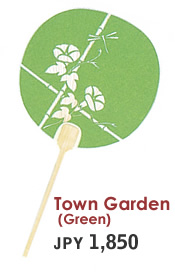 |
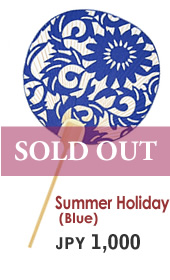 |
 |
||||
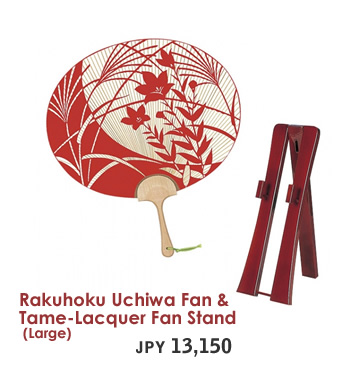 |
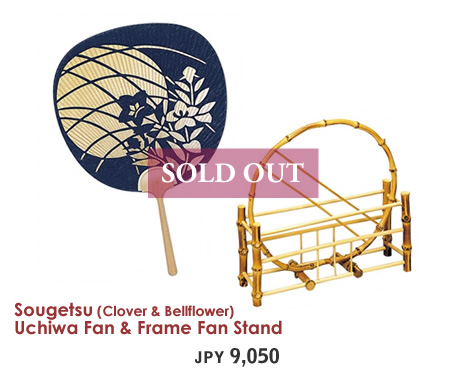 |
 |
|

